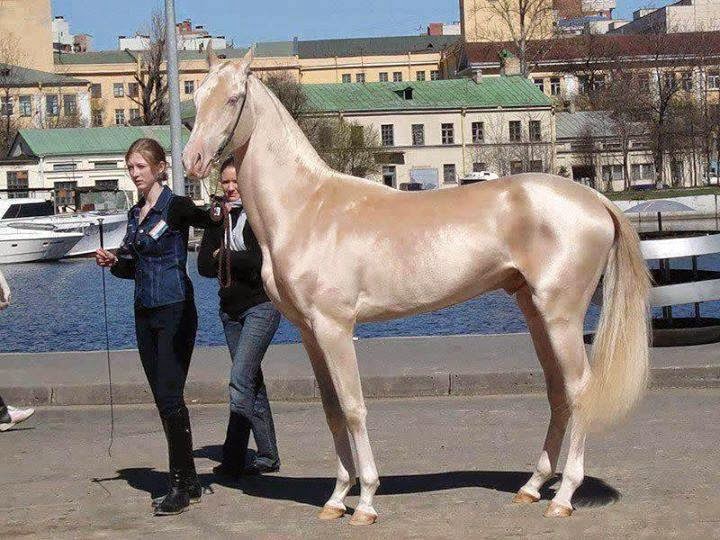Imagine a creature so magnificent that it captures the essence of beauty and power in its very presence. The "horse that shines like gold" is not just a figure of imagination; it represents the pinnacle of equine elegance and strength. This stunning animal, with its lustrous coat and graceful demeanor, has become a symbol of luxury and excellence in various cultures throughout history. Its allure draws attention and admiration, making it a celebrated figure in art, literature, and the equestrian world.
Throughout the ages, horses have held a significant place in human society, serving as companions, working partners, and even symbols of wealth. The "horse that shines like gold" stands out among its peers, capturing the hearts of horse lovers and enthusiasts alike. This article will delve into the various aspects of this extraordinary creature, exploring its historical significance, characteristics, and the cultural impact it has had on society.
As we embark on this journey, we will answer essential questions about the "horse that shines like gold." What makes this horse so unique? How has it influenced art and literature? What are its characteristics, and where can we find these magnificent creatures today? Join us as we explore the fascinating world of the horse that shines like gold.
What Are the Characteristics of the Horse That Shines Like Gold?
The horse that shines like gold is often characterized by its striking appearance and remarkable qualities. These horses typically possess a golden or palomino coat that glistens in the sunlight, giving them an ethereal quality. Their long, flowing manes and tails further enhance their beauty, creating a vision of grace as they move.
- Color: The golden coat, often resembling liquid gold, is the most notable feature.
- Temperament: These horses are known for their gentle and friendly disposition.
- Strength: Despite their delicate appearance, they possess incredible power and stamina.
- Intelligence: Highly trainable, they often excel in various equestrian disciplines.
How Did the Horse That Shines Like Gold Emerge in History?
Throughout history, the horse that shines like gold has been a subject of fascination and reverence. Ancient civilizations often depicted golden horses in their art and literature, viewing them as symbols of divinity and power. The association of gold with wealth and prosperity made these horses highly sought after by nobility and royalty.
Are There Famous Instances of the Horse That Shines Like Gold in Art and Literature?
Indeed, the horse that shines like gold has found its way into various artistic expressions. From classical paintings to modern literature, these magnificent creatures have been immortalized in different forms. Notable mentions include:
- The Golden Horse of Alexander: A legendary steed that symbolized power and glory.
- Literature: Numerous novels and poems reference golden horses as a metaphor for beauty and grace.
- Hollywood Films: Several movies feature golden horses as central characters, highlighting their unique attributes.
What Breeds Are Considered Horses That Shine Like Gold?
Several horse breeds are known for their striking golden coats. Some of the most notable include:
- Palomino: A breed specifically recognized for its golden coat and white mane.
- Quarter Horse: Often found with a golden coat, these horses are known for their versatility.
- Arabian Horse: While not exclusively golden, some Arabians exhibit stunning golden shades.
- Thoroughbred: Occasionally, these horses can have a golden hue, adding to their allure.
Where Can You Find Horses That Shine Like Gold Today?
Horses that shine like gold can be found in various locations around the world. Many equestrian facilities, riding schools, and farms specialize in breeding and showcasing these beautiful animals. Some places to explore include:
- Equestrian Shows: Events often feature palomino and golden horses, showcasing their talents.
- Horse Breeding Farms: Specialized farms breed and sell horses known for their golden coats.
- Rescue Organizations: Some organizations focus on rescuing and rehabilitating palomino horses.
What Makes the Horse That Shines Like Gold a Symbol of Wealth?
The association between the horse that shines like gold and wealth is deeply rooted in history. Owning a horse of such beauty and rarity has traditionally been a status symbol among the elite. These horses are often featured in royal parades, ceremonial events, and high-profile competitions, further solidifying their status as symbols of luxury.
How Does One Care for a Horse That Shines Like Gold?
Caring for a horse that shines like gold requires attention to detail, especially regarding their grooming and nutrition. To maintain their lustrous coat, owners should consider the following tips:
- Regular Grooming: Frequent brushing helps remove dirt and debris, keeping the coat shiny.
- Balanced Diet: A nutritious diet rich in vitamins and minerals supports healthy skin and coat.
- Hydration: Ensuring access to fresh water is crucial for overall health.
- Regular Veterinary Care: Routine check-ups can help prevent health issues that may affect coat quality.
What Are the Training Techniques for Horses That Shine Like Gold?
Training a horse that shines like gold involves a combination of patience, consistency, and understanding. Here are some effective techniques:
- Building Trust: Establishing a bond with the horse is essential for successful training.
- Positive Reinforcement: Rewarding good behavior encourages learning and cooperation.
- Gradual Exposure: Introducing new experiences slowly helps reduce anxiety and builds confidence.
Conclusion: The Enduring Legacy of the Horse That Shines Like Gold
The horse that shines like gold continues to capture the hearts and imaginations of people around the world. Its beauty, strength, and historical significance make it a remarkable creature that transcends time. Whether in art, literature, or the equestrian arena, this golden horse remains a symbol of elegance and excellence, reminding us of the profound connection between humans and these magnificent animals.



